Guest blogger: Kate Hawnt
Shortly after moving in to her new home, Mottisfont Abbey, the indomitable Maud Russell noted in her engagement book:
April 4 1935. Take boys to Londonderry House to hear Mrs Woodhouse.
Maud, a wealthy heiress, was married to Major Gilbert Russell, a banker and cousin of the Duke of Bedford. They purchased the entire estate of Mottisfont in 1934. They also maintained a London address, as was traditional for the upper classes at the time, enabling them to partake fully in fashionable artistic and political circles.
Raymond Russell (1922-1964), their youngest son, was 13 at the time of this entry and just about to start at Eton College, Windsor. A trip to hear Violet Gordon-Woodhouse, Britain’s foremost exponent of the harpsichord and clavichord at the time, would have undoubtedly been a memorable and inspirational experience for this musical and intense child.
Listen to Violet Gordon-Woodhouse playing Haydn on the harpsichord
Within 4 years he had already bought his first “special instrument” – a term he uses later in his book, The Harpsichord and Clavichord.
A talented pianist and organist, Raymond showed interest in the history of instruments from a young age. By 1941 he had already written two exhaustively researched articles on the organs of Christchurch, Spitalfields and Wells Cathedral, published in The Organ in 1940 and ‘41 respectively.
In 1940 he had also managed to track down a clavichord. He wrote to his brother:
It is of the usual size, 4, 1/8 octaves, and is by Grunert. This means that the instrument was built about 1800-1820; and in the ordinary course of events a clavichord of this description would cost about £50, and it therefore seems a great pity to miss the opportunity of getting it.
Raymond borrowed £10 to purchase the instrument so, if his statement is correct, he did indeed get a bargain! The instrument was purchased from an Ellis Houghton of Ashington.
That same year he went up to Downing College, Cambridge to read Music and History. Within two months of his arrival he was to be found performing a programme of Elizabethan music with the soprano Ena Mitchell at the Houghton Hall for Downing College Musical Society. Raymond used a virginal by Alec Hodsdon of Lavenham for this concert. It is not clear whether Raymond had any of his own keyboard instruments with him at Cambridge, other than a piano. This recital however, and his friendship and correspondence with Professor Edward Dent (another unsung early music pioneer), indicate that in the few years he was at Cambridge he was already delving quite deeply into the as yet unnamed field of historical performance practice.
During Raymond’s time in Cambridge his historical sensibility about instruments and their claims to authenticity is developing. This can be seen when he encounters an instrument that Dent referred to as “my so called ‘clavichord’”. In their continued correspondence it appears that Dent offered this clavichord to Raymond, but the offer was never taken up. This ‘clavichord’ must be the instrument that is now hidden away in the Cobbe Collection at Hatchlands, and is labelled Roberto Gerhard’s ‘Clavichord’. The hesitant labelling of it as a clavichord, and probably Raymond’s lack of interest in it, are because this instrument was originally a square piano by M. & W. Stodart c. 1812, which was ‘converted’ into a clavichord prior to Edward Dent’s ownership. Its previous owner had been Charles Sayle.
From 1942 to 1946 Raymond served in the Royal Fusiliers. He spent the last months of the war in India and was demobilised in 1946. Although his musical researches were obviously interrupted, it is clear from his correspondence that he continued some musical activities.
Please subscribe to this blog – in the top right corner – and receive notifications of new posts by e-mail. In terms of getting information, this is preferable to “liking” the blog (though you can do that too), as Facebook’s money-making system limits the number of people who see our news feed, to as little as 10% of the total sent!
Performing aspirations
In March 1947, having recently welcomed her son to Mottisfont, Maud Russell noted in her diary that Raymond hoped to study with Wanda Landowska in New York and aspired to a performing career on the harpsichord – an ambition she doubted he’d succeed at. Within a year he went some way to proving Maud’s doubts wrong.
Between 1947 and 1950 Raymond had a series of recitals in prestigious concert venues including the Wigmore Hall, London and the Salle Cortot, Paris. A review in The Times from a concert in Chelsea Town Hall, London, on January 31st, 1950, shows an evident improvement in his skills:
“Seventeenth- and eighteenth-century French keyboard music was also heard at Chelsea Town Hall on Tuesday, this time played on a harpsichord by Mr. Raymond Russell, whose registration is now a good deal more imaginative and his approach more commanding than when he first ventured into public. In concertos by Bach and Haydn he had the cooperation of the Boyd Neel Orchestra.”
The last known public performance of Raymond’s is a live recital for the radio station, La Radiodiffusion Française in 1953, made while he was living in Paris.
Although it’s unlikely that Raymond managed to study with Landowska, a later note to the formidable lady credits her as an influential factor in his interest in the harpsichord. Indeed, in the photo at the top of this post he is seated at a Pleyel instrument, highly favoured and remodelled by Landowska herself. Although these instruments clearly played a part in his development as a player and collector. Raymond’s later opinion of Pleyel harpsichords changed considerably; he did not view them as suitable instruments for early music performance. This change in opinion went alongside a change in the type of instruments he began to acquire.
Collecting
In later life Raymond claimed that he made a conscious decision to put aside performing in the early 1950’s, to better concentrate on his increasing collecting activities. When did the idea of a collection start though? Owning a few instruments for the purpose of performance doesn’t automatically make the owner a collector. There was certainly a family history of collecting, and Raymond apparently formed an impressive stamp collection as a child. His early interest and acquisition of historic keyboard instruments may have started as a form of collecting for the purposes of scholarship. He didn’t get on very well with formal education, as the archive at Downing College confirms, but by 18 was already expert at chasing out the finest examples of an object and immersing himself in even the tiniest details of a subject. His articles in The Organ are excellent examples of his dogged pursuit of historical facts. It was only later in life that the purpose of his collection changed and he began to focus on acquiring specific examples of instruments.
Photos taken during Raymond’s performing career show him playing a wide variety of keyboard instruments. Most of the photos are from between 1947 and 1950. Of course the instruments pictured don’t all necessarily belong to him but they are certainly helpful to establish the type of instruments he used whilst still performing. With kind help from Marilyn Mountford it has been possible to identify the location of some of the photos and thus to confirm in some cases that the featured instrument belonged to Raymond.
These two pictures were taken in the studio of Romney’s House, Hampstead, a property apparently bought by Maud Russell (between 1947 and ‘49) for Raymond.
An old friend of his wrote that the Russells bought the property in order for Raymond to house his collection and that he’d hoped to put on recitals there. Unfortunately, his application for a license to hold concerts there was turned down and the property was swiftly sold on in 1952.
By the time of his purchase of Romney’s house Raymond already owned a few instruments and referred to them as a collection. One of them was the pre-1912 Art Case Pleyel shown here, and three others are mentioned in a concert review: a reviewer at Raymond’s Wigmore Hall recital, in November 1950, mentions Raymond playing an early English virginals, a Kirkman harpsichord and a Dolmetsch harpsichord.
From 1950 to ‘55 Raymond managed to turn these few “special instruments” into a world-class collection. Through painstaking research and no small investment of money Raymond strove to form a collection that would demonstrate every national school, style, and period of early keyboard instrument. Travelling and corresponding with instrument owners and dealers throughout Europe and America saw Raymond build up a wide and illustrious set of correspondents and acquaintances. In many private negotiations to persuade an owner to sell him their cherished instrument Raymond had to invest a great deal of time and charm.
Through this work he built up some firm and long-lasting friendships. Through frequent sales and purchases via Sotheby’s Auction House, Raymond became close friends with Charles Vere Pilkington, then director of Sotheby’s. Pilkington was another loyal exponent of the harpsichord and a former pupil of Violet Gordon-Woodhouse; he was the inspiration for Lennox Berkeley’s “Mr Pilkington’s Toye”, for solo harpsichord. The esteemed harpsichordist and musicologist Ralph Kirkpatrick was another notable and influential friend of Raymond’s whose importance in encouraging and helping Raymond in publishing his book, The Harpsichord and Clavichord was paramount.
Legacy
During his lifetime, Raymond established himself as an acknowledged expert on early keyboard instruments. He also contributed greatly to both the revival of the harpsichord and to early music in general.
Between 1955 and ‘61 he authored a number of publications, including his own highly-respected book:
“The Harpsichord since 1800”, in Proceedings of the Royal Musical Association, 82nd session (1955-1956): 61–74.
Catalogue of the Benton Fletcher Collection of early keyboard instruments at Fenton House, Hampstead. London: Country Life Limited for the National Trust, 1957.
Early Keyboard Instruments (catalogue for the Victoria & Albert Museum). London: Her Majesty’s Stationery Office, 1959.
The Harpsichord and Clavichord: An Introductory Study. London: Faber & Faber, 1959.
“The Harpsichord, Spinet and Virginal”, in Musical Instruments Through the Ages, edited by Anthony Baines, 74-87. Harmondsworth, Middlesex: Penguin Books, 1961.
In addition to his earlier live performances Raymond spoke about the history and development of the instrument on the BBC Third Programme on at least two occasions.
See here for a synopsis of one programme.
By the late 1950’s Raymond had conceived the idea of presenting his collection to a British university where it could become a live museum and centre for the study of keyboard organology and performance practice. In 1960 he settled on the University of Edinburgh and St Cecilia’s Hall as a suitable place to carry this out. Sadly, his untimely death in Malta in 1964 meant that he was unable to see it through. It was left to his mother, Maud, to complete the donation in 1968. Along with his book, this was his biggest contribution to the history of the harpsichord in the 20th century.
Here’s the complete catalogue of the Raymond Russell Collection of Early Keyboard Instruments with descriptions, photos and some sound files.
And further information about the collection here.
Acknowledgments
Thanks are due to the Centre For Research Collections, Edinburgh University Library, and to Emily Russell, Raymond’s niece, and the Maud Russell Estate for their kind permission to reproduce quotes from Maud and Raymond Russell’s private documents.
Request for information:
Kate Hawnt is a professional singer, specialising in early music, who is currently supported by the Arts and Humanities Research Council in researching for a PhD on Raymond Russell at the University of Southampton, in conjunction with the National Trust at Mottisfont Abbey. She would welcome any further information, photos or documents about Russell and can be reached at kmh1g13[at]soton.ac.uk. [Replace the [at] with @]
Copyright © 2016 Kate Hawnt – All Rights Reserved

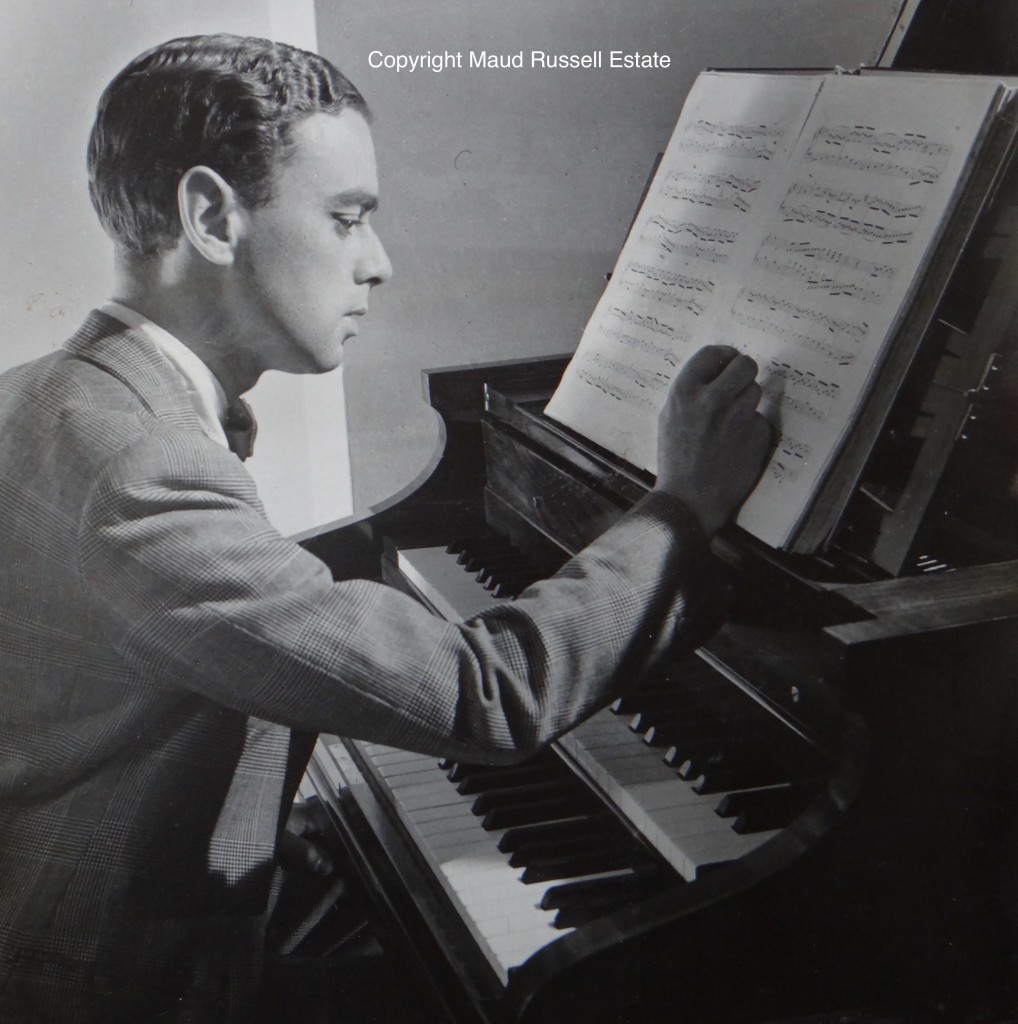
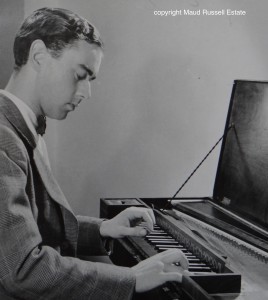
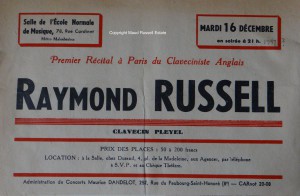
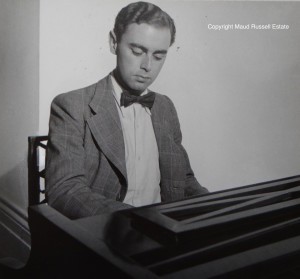
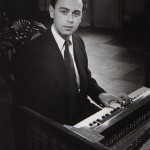
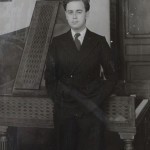
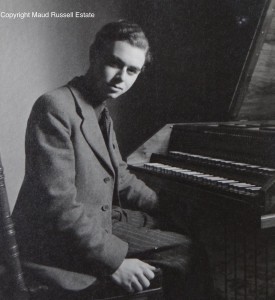
Did you know that RR made a private series of gramophone records for HMV on 19 May 1948 (that may be the date on which they were processed rather than recorded) on matrix numbers CTPX15543-15550. He probably had to pay to have them made but should have been sent test pressings. Composers included Bach, Couperin and Scarlatti. I am not sure if copies exist in the EMI Music Archive at Hayes – probably not since there would have been no question of issuing them in the HMV catalogue and, from their point of view, would have taken up valuable space.
I did not! That is fantastic information, thank you! How did you find that out?
Does anyone know where Raymond is buried? Was it on Malta, if so where.
Raymond is buried in Malta